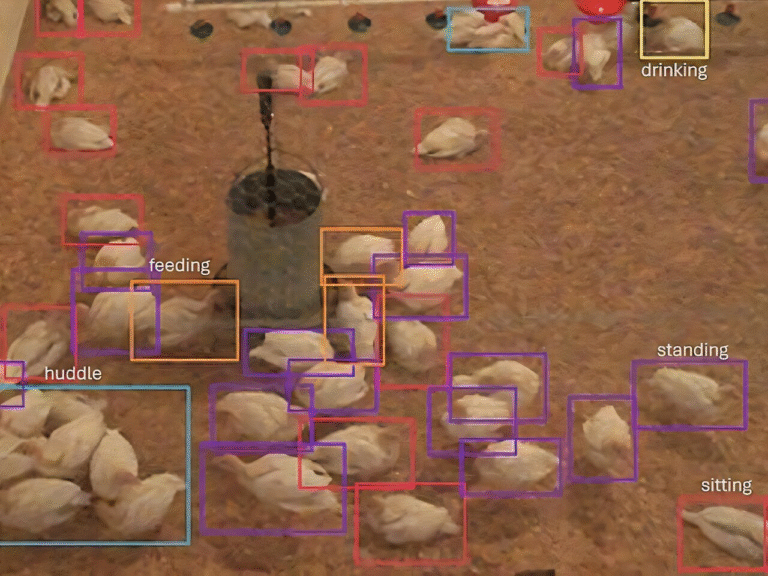Extra Iron Helps Wheat Beat the Heat and Grow Stronger, Say Japanese Scientists

Climate change is putting enormous pressure on the world’s food supply, and wheat, one of the most important cereal crops, is particularly vulnerable. A new study led by Keiichi Mochida and his team at the RIKEN Center for Sustainable Resource Science (CSRS) in Japan has uncovered how prolonged heat stress affects wheat growth — and how a special synthetic compound can help the plant recover. The findings, published in Nature Communications (2025), reveal that boosting the plant’s ability to take in iron could make it far more resilient to warming temperatures.
The Heat Problem in Wheat
One of the major threats from climate change is not just extreme heat waves but extended periods of moderate heat. Wheat is a cool-season crop, meaning it thrives in mild temperatures. When exposed to continuous warmth, its growth slows, its yield drops, and even its nutritional value declines. According to global estimates, wheat yields fall by about 6% for every 1°C rise in average temperature.
Scientists already knew that high heat damages plant metabolism and photosynthesis, but Mochida’s team wanted to know what happens when plants experience longer spells of moderate heat — the kind of stress that’s becoming more common as the planet warms.
What the Researchers Found
In their experiment, the RIKEN researchers grew bread wheat (Triticum aestivum) under controlled conditions. One group was kept at a normal temperature, while another endured two weeks of moderately high heat. The results were striking: the heat-stressed plants weighed much less and showed clear signs of reduced photosynthesis. When the researchers analyzed the leaves, they found that iron levels had dropped to less than half of what was normal.
This discovery hinted that the plants’ stunted growth wasn’t just due to heat—it was also linked to iron deficiency. Iron is vital for plants because it supports chlorophyll production and photosynthesis. Without enough iron, leaves turn yellow, photosynthetic efficiency drops, and overall biomass declines.
Digging Deeper with a Model Plant
To understand this mechanism more deeply, the researchers turned to a smaller, simpler plant often used in laboratory experiments: Brachypodium distachyon, also known as purple false brome. It’s genetically related to wheat but much easier to study.
Different samples of this grass, called accessions, reacted differently to heat. For instance, one sample (Bd21) became highly stressed — its leaves turned yellow, its biomass dropped sharply, and it lost about 91% of its normal iron levels. Another sample (Bd21-3) handled the heat better, losing only about 61% of its iron and maintaining more growth.
This difference helped the scientists zero in on a specific gene called BdTOM1 — short for Transporter of Mugineic Acid Family Phytosiderophores 1. The gene’s job is to help the plant make compounds called mugineic acids, which bind to iron in the soil and make it easier for the roots to absorb. In other words, plants can’t take up raw iron directly; they need these natural chelators to capture it first.
Under heat stress, the more tolerant Bd21-3 sample kept producing higher amounts of deoxymugineic acid (DMA) — one of these iron-binding molecules — whereas the sensitive Bd21 sample didn’t. This explained why Bd21 became iron deficient and grew poorly. The team concluded that variations in the TOM1 gene may determine how well a plant copes with heat-induced iron shortages.
A Synthetic Solution to Iron Deficiency
Knowing that mugineic acids are key to iron uptake, the researchers wondered if they could help heat-stressed plants by providing an artificial version of these compounds. They tested a synthetic molecule called PDMA (proline-2′-deoxymugineic acid), designed to mimic the natural chelator.
The results were remarkable. When PDMA was added to the soil, both wheat and B. distachyon plants grew better under high temperatures. Their photosynthesis improved, and they accumulated more biomass. However, there was an important caveat: if the PDMA concentration was too high, it led to iron toxicity and the formation of harmful reactive oxygen species (ROS). This means that while chelation helps, balance is critical — too much iron can damage cells instead of helping them.
How the Experiments Were Done
The research was carried out under controlled laboratory conditions using hydroponic and resin-block systems. This setup allowed precise monitoring of nutrients and temperature.
- Temperature treatments: Wheat and B. distachyon were exposed to roughly 32–35°C for two weeks to simulate long-term heat stress.
- Measurements: The scientists checked fresh biomass, chlorophyll content, photosynthetic efficiency (Fv/Fm), and nutrient concentrations in the leaves.
- Genetic analysis: In B. distachyon, they used quantitative trait locus (QTL) mapping to pinpoint genetic regions linked to heat tolerance and found that BdTOM1 played a crucial role.
- Chemical analysis: They measured the secretion of deoxymugineic acid from the roots and confirmed that tolerant plants released more of it.
- Supplement tests: The team added PDMA at different concentrations and observed that moderate doses improved growth, but excessive amounts caused toxicity.
Why Iron Matters So Much to Plants
Iron isn’t just another nutrient — it’s essential for photosynthesis, respiration, and enzyme activity. Plants need it to make chlorophyll, the pigment that captures sunlight. Without enough iron, new leaves often appear yellow or pale green, a condition known as iron chlorosis.
Interestingly, iron deficiency is common even in soils that contain plenty of iron because most of it exists in forms that are insoluble and unavailable to plants. That’s why many species, particularly grasses, have evolved the mugineic acid pathway — a natural biochemical trick to make iron usable.
In this study, the researchers essentially hacked that pathway by adding PDMA, showing that it can restore iron balance even under heat stress. This could have big implications for agriculture, especially in regions where global warming is already disrupting traditional wheat production.
Implications for Agriculture and Food Security
These findings open up two major pathways for improving crop resilience:
- Genetic improvement: Breeding or engineering wheat varieties that express stronger versions of TOM1 or related genes could help them maintain iron uptake under warmer conditions. This would be a sustainable, long-term solution for adapting to climate change.
- Agronomic treatment: Short-term solutions could involve applying synthetic chelators like PDMA in fields during heat-prone seasons. However, this would need to be carefully managed to avoid excess iron and potential environmental impacts.
Either way, the core idea is powerful: managing iron nutrition can help plants survive heat stress — a relatively overlooked factor in climate adaptation research.
A Step Toward Climate-Resilient Crops
Wheat is responsible for about 20% of the world’s calories, feeding billions of people daily. If global temperatures continue to rise, the combined effects of heat, drought, and nutrient imbalance could threaten food security worldwide. Studies like this one suggest that enhancing nutrient homeostasis—especially iron balance—might be one of the most effective ways to keep yields stable in a warming world.
The next challenge for the RIKEN team will be to test these results in real soil and field conditions, where factors like moisture, microbes, and pH can influence iron availability. Still, the research offers a fresh perspective: heat tolerance isn’t just about surviving high temperatures; it’s also about managing nutrients smartly.
Final Thoughts
This study doesn’t just explain why wheat struggles in warm conditions—it also provides a tangible way to help. By improving iron uptake through genes like TOM1 or supplements like PDMA, scientists may have found a practical route to strengthen one of humanity’s most essential crops. As the climate continues to shift, such insights could prove crucial for maintaining both crop yield and nutritional quality.
Research Reference:
Minami, A., Mochida, K., et al. (2025). Chelation-based iron uptake mitigates the effects of prolonged high-temperature stress in cool-season grasses. Nature Communications.
https://doi.org/10.1038/s41467-025-63005-0




